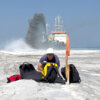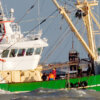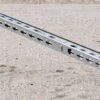Environmental monitoring programmes are targeted towards variables identified as important for the specific local ecological system being dredged.
Variables
Variables to be monitored must be environmentally, but also socially and economically, important. These variables are described through environmental impact assessments and are usually determined by the client, the contractor and stakeholders working together.
With so many interests involved, the scale of an environmental monitoring programme can be difficult to determine. It should, in general, be cost effective, reflecting the size of the dredging project, in reasonable proportion to the potential impacts caused by the project.
In general, variables that should be identified are:
- depth of the sea- or riverbed;
- suspended sediment concentration;
- spilled sediment accumulation, especially for environmentally sensitive projects;
- hydrographic parameters;
- placement and post-placement leakage from Confined Disposal Facilities; and
- chemical and biological parameters.
Cost factor
Environmental monitoring can be a long and costly process. For larger projects it may last many years and require expensive equipment. Therefore, not all monitoring methods are applicable to smaller projects. For instance, radar and satellite based monitoring or ADCP may be unnecessarily expensive.
The dredging industry is always deeply concerned about the environmental impact of their works and therefore monitoring is of the utmost importance. However, as with all aspects of dredging projects, a cost-benefit analysis for monitoring should also be considered.
Environmental monitoring programmes should be wary of being over-dimensioned. Too often in an effort to ensure that all possible environmental impacts are detected, environmental monitoring plans may contain requirements that are not relevant to the particular project.
Transparency amongst client, contractor and stakeholders will allow the development of a flexible environmental monitoring plan – which takes into account natural disturbances, for instance. This will be far more economical and achieve far better results.































